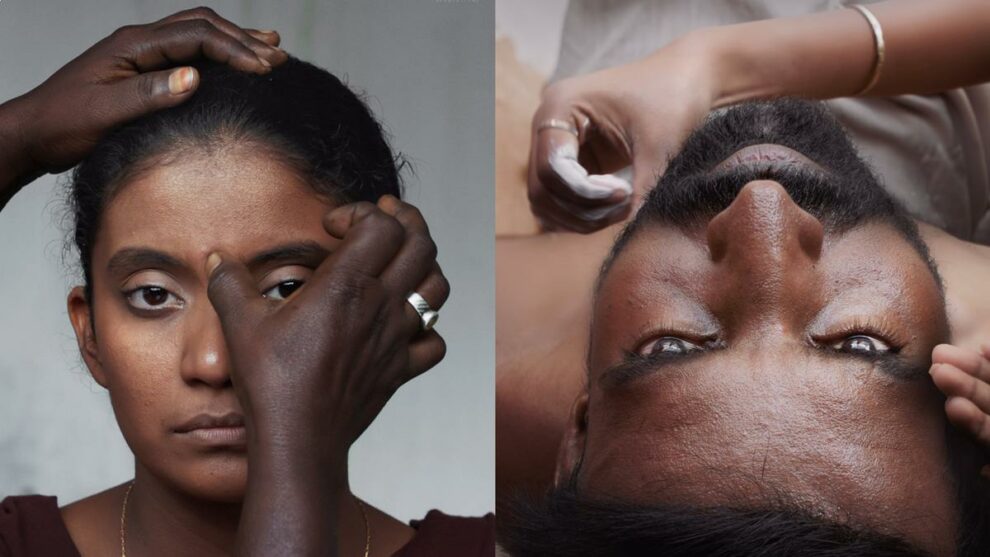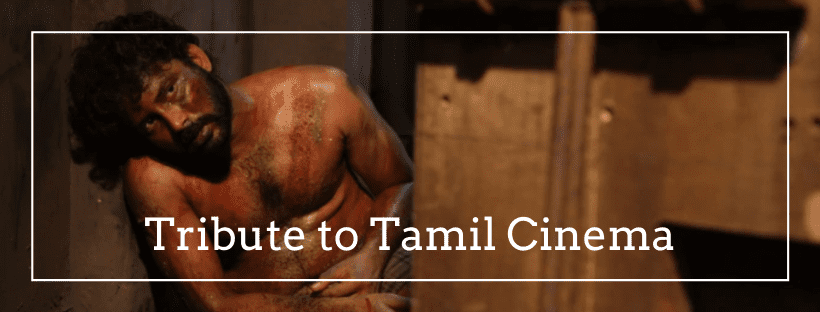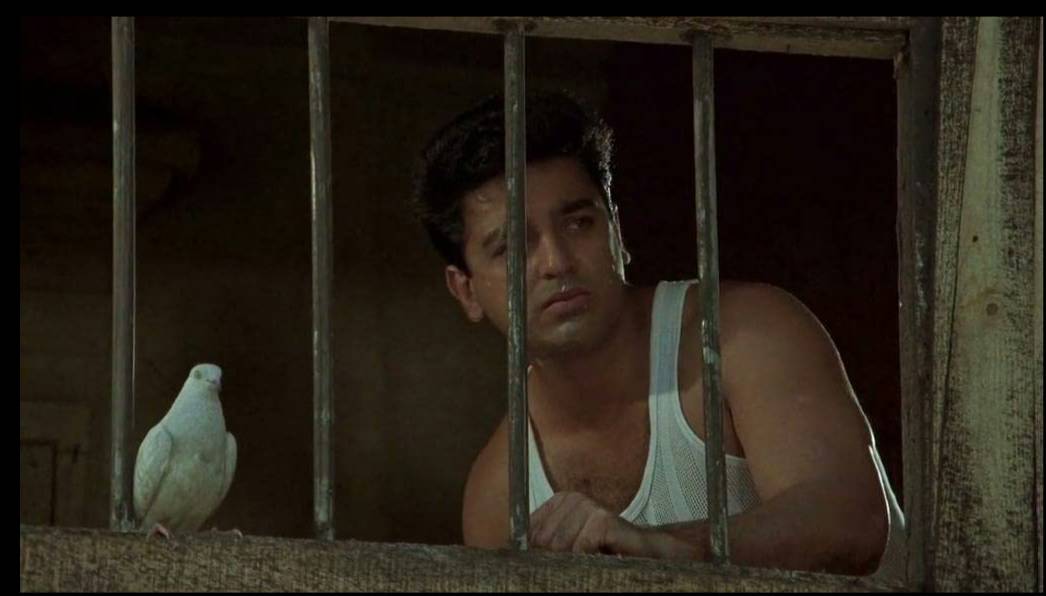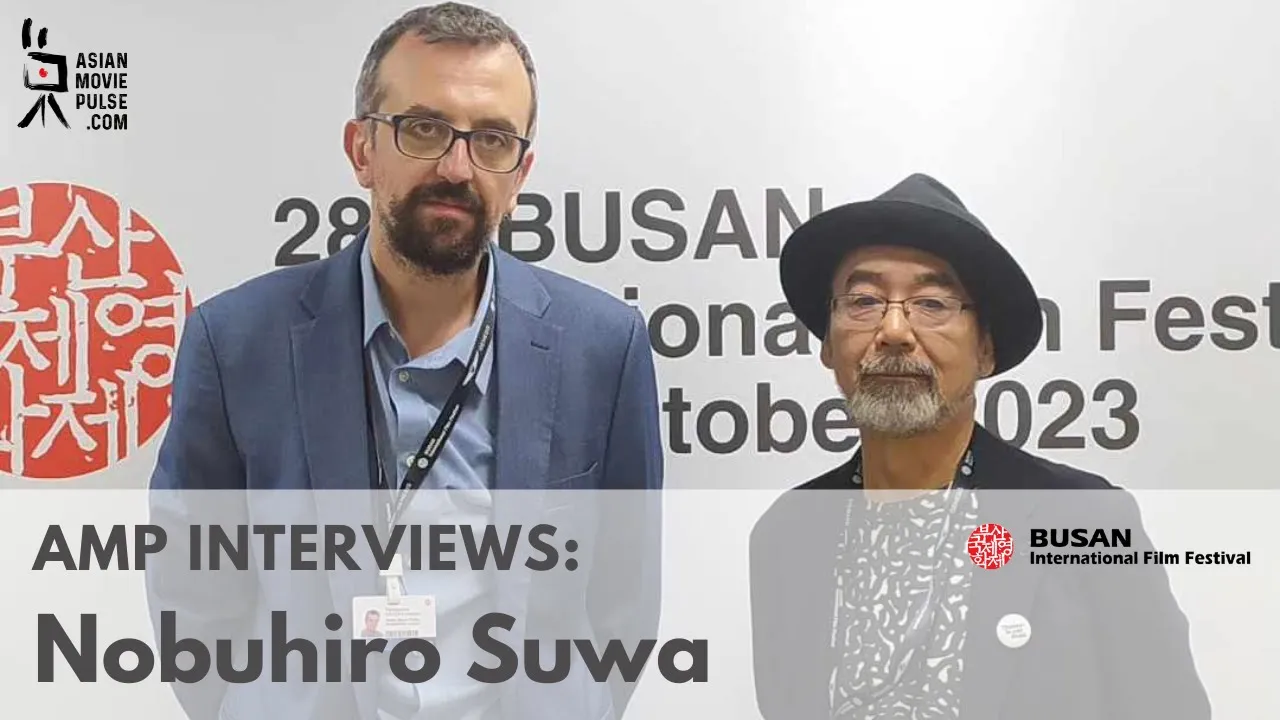Premiering in the Forum of the 74th Berlinale, “The Adamant Girl” is a story of patriarchal oppression. Set in Tamil Nadu, it unfolds as a tale of the marginalized ones – a girl named Mina is soon to be married, but it seems she developed a romantic feeling for an outsider, while her soon-to-become-husband was away for work. This sparks a spiral of misfortune and reveals the familial reciprocity, as the patriarchs won't take no for an answer. There's no margin for true feelings here – the family embarks on a trip to a neighborhood village to exorcise the girl; this is to say, to cast the spell of love away from her so that she can obey.
On their way to meet with a shaman, nothing goes as it should. The trip becomes an odyssey, an excruciating task in itself. The rickshaw car is nearly broken, every conversation turns into a fight, and the heat of the sun spices things up, raising the tension among the family members. The story itself is rendered through the girl's eyes – her perspective is, indeed, adamant; she awaits the inevitable with a silent gaze. The camera captures these moments with proximity – there's sheer beauty in that, as the scenes freeze in moments of silence and anticipation, where we can only read the small signs of resistance from an unyielding posture or a face that refuses to look down.
“The Adamant Girl” screened at the 74th Berlinale's Forum

Following the success of “Pebbles”, which won the IFFR's Tiger Award in 2021, PS Vinothraj strives for his own cinematic language that would reflect the peculiarity of the setting and its people. Set entirely in the open spaces of the Indian South, in Tamil Nadu's dusty landscapes, the film grasps the interconnectedness of people and nature, insofar as it pivots around the beliefs integrated within the frame of nature. It's a film of fascinating moments and contrasts, where the intimacy and delicacy of familial bonds are juxtaposed with the tour-de-force of raw, unstoppable anger of patriarchal reign.
We met Vinothraj during the 74th Berlinale, where we discussed the cultural subcontext of the film, the proximity of love and anger in the lives of Tamil people, the familial bonds and Tamil Nadu's natural setting, the idea behind encompassing the neurotic tension within the cinematic language, as well as the recent attention shift towards the Tamil Cinema in the international circuit.
Łukasz Mańkowski: Let's start with the title of the film. “Kottukkaali” is translated as “The Adamant Girl”, but what does this figure of the ‘adamant girl' stand for in the region of Tamil Nadu?
PS Vinothraj: It's a colloquial term used in our region. It conveys the exact same meaning, but primarily it is about emphasizing the stubbornness of a woman willing to stand for something, no matter what. If one is very stubborn and she wants something, then she will be called kottukkaali.
A lot of the scenes highlight human or non-human characters gazing right into the lens of a camera – the girl looking into it, the rooster being somewhat aware of it. Then there's the ritual, mugamaathu, which is also about “cleaning the face”. Where does this interest in faces in your film derive from?
That is something that I consciously incorporate as a communication device. Mina goes through many experiences; she's disturbed, and her state of mind is far from being in order. By being close to her face, I want the audience to be able to get a grasp of that. As for the rooster – the animal is essential for the practice, but what I wanted to do with it is to focus on its presence and while doing that, I noticed that it also gazes right into the camera, and with that, it reflects emotions as well.
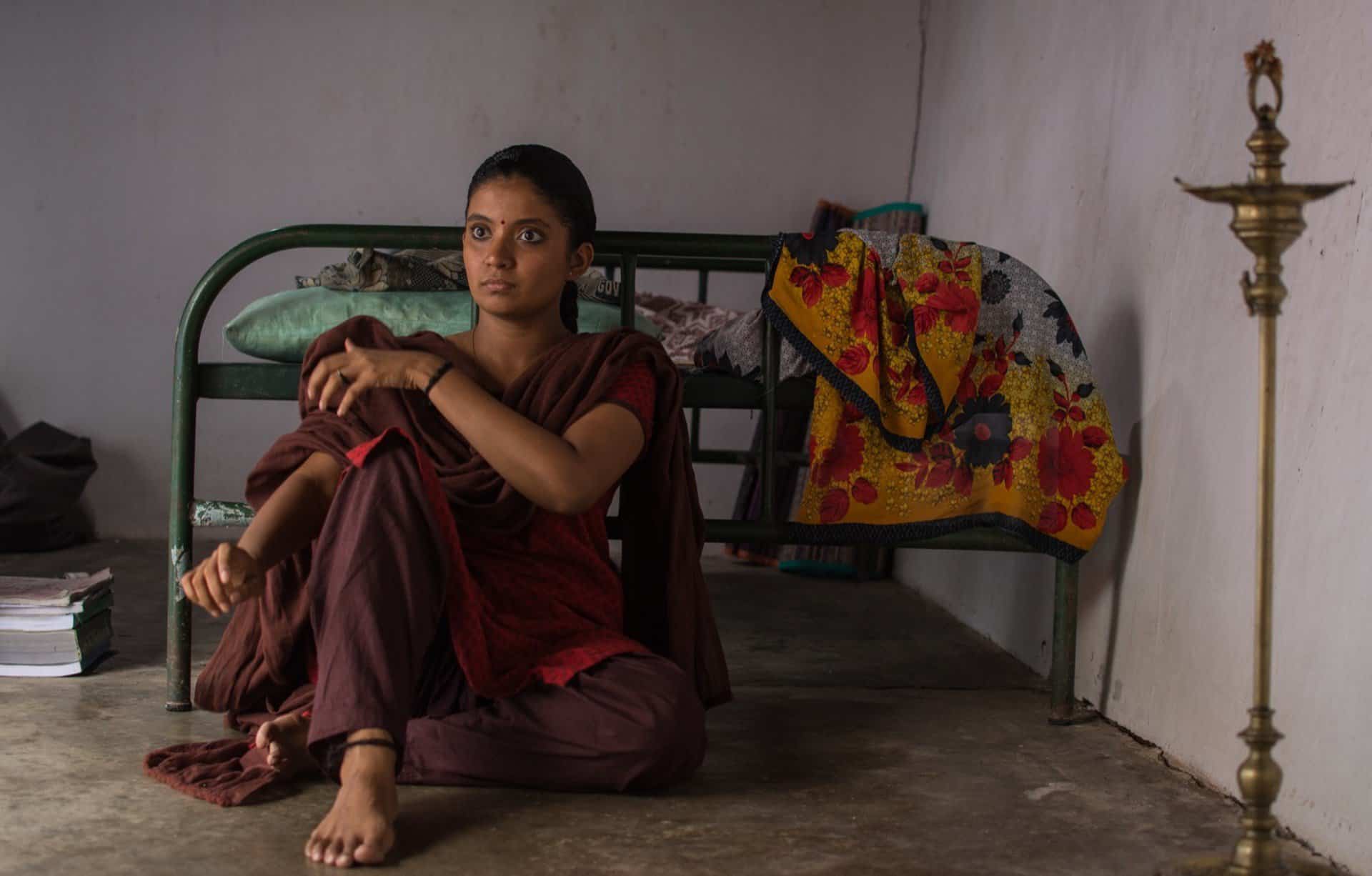
Both of your films, “Pebbles” and “The Adamant Girl”, have this unique energy that pivots around the constant motion of the characters and their bodies. The camera sticks to them, marking their every move, and maintaining proximity to their presence. It renders a strong feeling of participation; while watching it, it feels as if I'm also propelled into motion. Where does the need to follow the movement come from?
I'm very happy you felt this way, as this was the main reason to shoot the scenes like this. This is to say, it's not driven by any cultural notions, I simply want the viewers to follow the characters very closely, to follow the film's pace. I want the audience to experience the circumstances of the setting the same way as the characters in the film do.
Check the review of the film
You also seem to focus a lot on the presence of neurotic energy in the setting and the presence of the human body. Your characters seem to be constantly on the edge of an emotional eruption, all ready to fight for their cause. How does the process of filmmaking revolve around the cultural specificity of the region?
The main idea behind the journey that the characters need to embark on is that it serves as the final solution. It's their last resort. If that cannot help the girl, then their cause is lost. They're going to this place to exorcise the girl out of the total, burning frustration. The final step is to solve the problem with the girl. There's a sense of urgency and inevitability in that whole process. That's why I focus on the movement – I want to underline the importance of the experience and how determined they are in their quest.
I felt there was a sense of timelessness in that story. It could happen now, it could happen 20 years ago. How much it is set within the context of here-and-now?
It's not that it was only happening 20 years ago, but it's still there. And not only in South India but elsewhere, in different regions too. In fact, it's across India, but also across the whole world. And it's happening now. Each place will have a different name to it and a different practice that comes with the ritual of cleaning the supposed problem. “The Adamant Girl” is not about what's happening to just one particular girl in that city in that part of the world; it's about women going through experiences like that in all of the parts of the world. However, the film untangles our perspective, our context, and our place. But through that, I hope that the audience can resonate with the fact that this story is a story of many other places.
The theme of patriarchal oppression seems to be in sync with how you depict Mina's hair. You start a film with a sequence of preparing the girl's body and hair for the ritual, but at some point it gets loose. Could you elaborate on what kind of story the hair tells?
The idea is that when they try to pin the girl's hair, they also want to pin the girl. It's not just the hair, it's also her emotions, and in a broader context – her agency, too. In that form of suppression, they want to hide her feelings and make her obey the figure of the family. At first, the hair is intact, but after a fight, it's all messed up. When she wants to fix it, even though she's surrounded by chaos and nothing but problems, she's still trying to be herself, trying to find a glimpse of something positive amidst all the helplessness. In a sense, she starts to reinvent herself despite her position. That's when the smile comes.
In the middle of the story, we also see her having a vision of herself, but the hair is completely loose.
Society wants to pin her down, but she develops this vision – she wants to remove the hair because she strives for freedom. It's a vision of what she really wants to become.
Aside from the focus on the hair, there's also a focus on the closeness of the bodies. Even though the film abounds in tension, anger, and aggression, there's also a unique sense of intimacy that binds them. I think of the relationship between the sister and her brother – in one scene they fight, but in the other, she takes a bug out of his eyelid with her tongue. Where does this contrast derive from?
The place I'm from and where the film is set is called Madurai in Tamil Nadu. We tend to talk about ourselves as very emotional people; it's either extreme violence or extreme love. There's no middle ground. We're always bonded together. That translates to how the family system works here. I might not like what my brother is doing, but he's still my brother, you see? We will never give up on our families. For us, family always comes first, despite having so many differences between each other. The bonds come first. That's how our upbringing works and it affects our way of living. We might fight a lot, but we shall never let each other down. In the film, there's the character of Pandi, who leaves for the city for work. When it becomes clear that Mina had a romantic relationship with someone else, Pandi is accused of not holding the fort when it needed. And because there's a family context, that's why the sisters take the responsibility – they also feel accountable for what had happened. They will not give up on their brother. That's how families work here; it's about standing through thick and thin.
In “Pebbles”, there was also an image of women being a unifying force for their families to perish – they're the keepers of the bonds.
But despite that, they're also inflicted by the dynamics of oppression. In a sense, both of my films become messages as a form of support. The system is built on ideology – the women are those who keep us together, but this happens through oppression. That's why there's a similarity between “Pebbles” and “The Adamant Girl”.
What strikes me in your work is the setting. Nature is important for your films as it frames everything; there's a notion of ubiquity that comes from how nature is portrayed in both “Pebbles” and “The Adamant Girl”. What's your relationship in nature in the context of storytelling?
First of all, nature is important for the actions of the humans. In India, we make decisions depending entirely on the season. The climate determines everything that we're doing around ourselves. And because of that, nature organically becomes the first layer of the script. In “Pebbles”, the story takes place during a very hot summer, the land is dry, and the sun just melts everything. With “The Adamant Girl”, it's shortly before summer. It's crucial to address that because if it was summer, they wouldn't even get out of their houses. It would be too hot to embark on such a journey or it would become even more chaotic. They would probably fight even more and the whole process would be even more disastrous. And all that comes to nature – it always comes as the first layer of my writing. Nature is also a reflection of what we become, what we are – what we eat, where we are, and which direction we're heading.
Check the review of the film
There's a good momentum around Tamil Cinema these days. A bunch of great films have been given a lot of exposure at festivals, there's more attention to it on streaming platforms, and some critics dub it as a Tamil New Wave. How do you feel about its current status?
We have been making a lot of good films with which we want to connect with other parts of the world. The festivals started to pay attention to us, too, which makes us very happy, that's for sure. I don't know if that's enough to call it a Tamil Wave, but I'm definitely happy that the change is there, and that festivals started to notice our presence. There are good writers and storytellers in South India, so I can only say that I'm happy that they're getting noticed.
Do you think there's a reason why the change started to happen now?
I think it's just a huge perspective change. It might be also because of the exposure of other big films. “RRR” is often dubbed as a film that propelled that shift of attention and now a lot of Western countries are watching out for Indian films. The feeling of that change of perspective is definitely there. And I feel we're making really good films that can appeal to any kind of audience.


